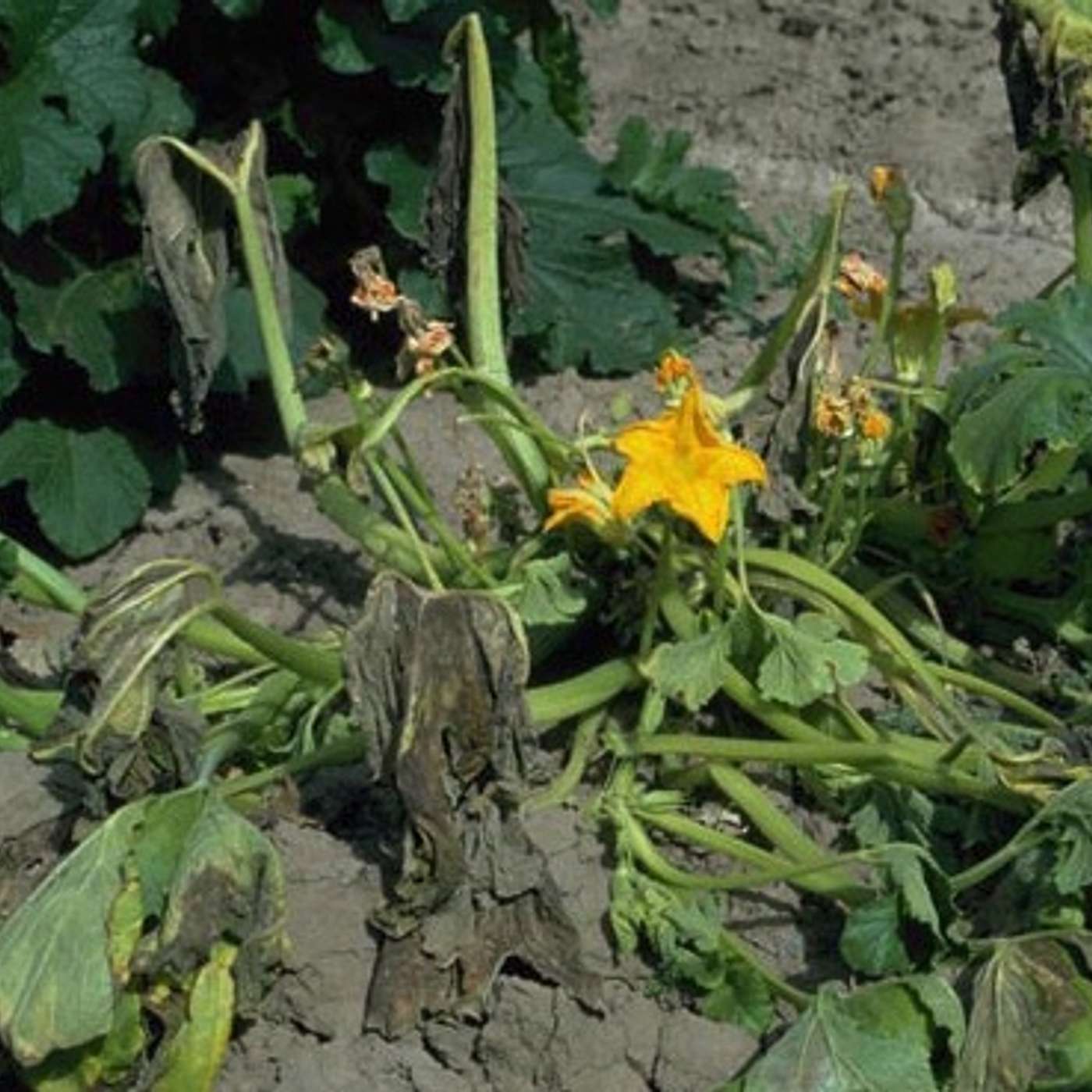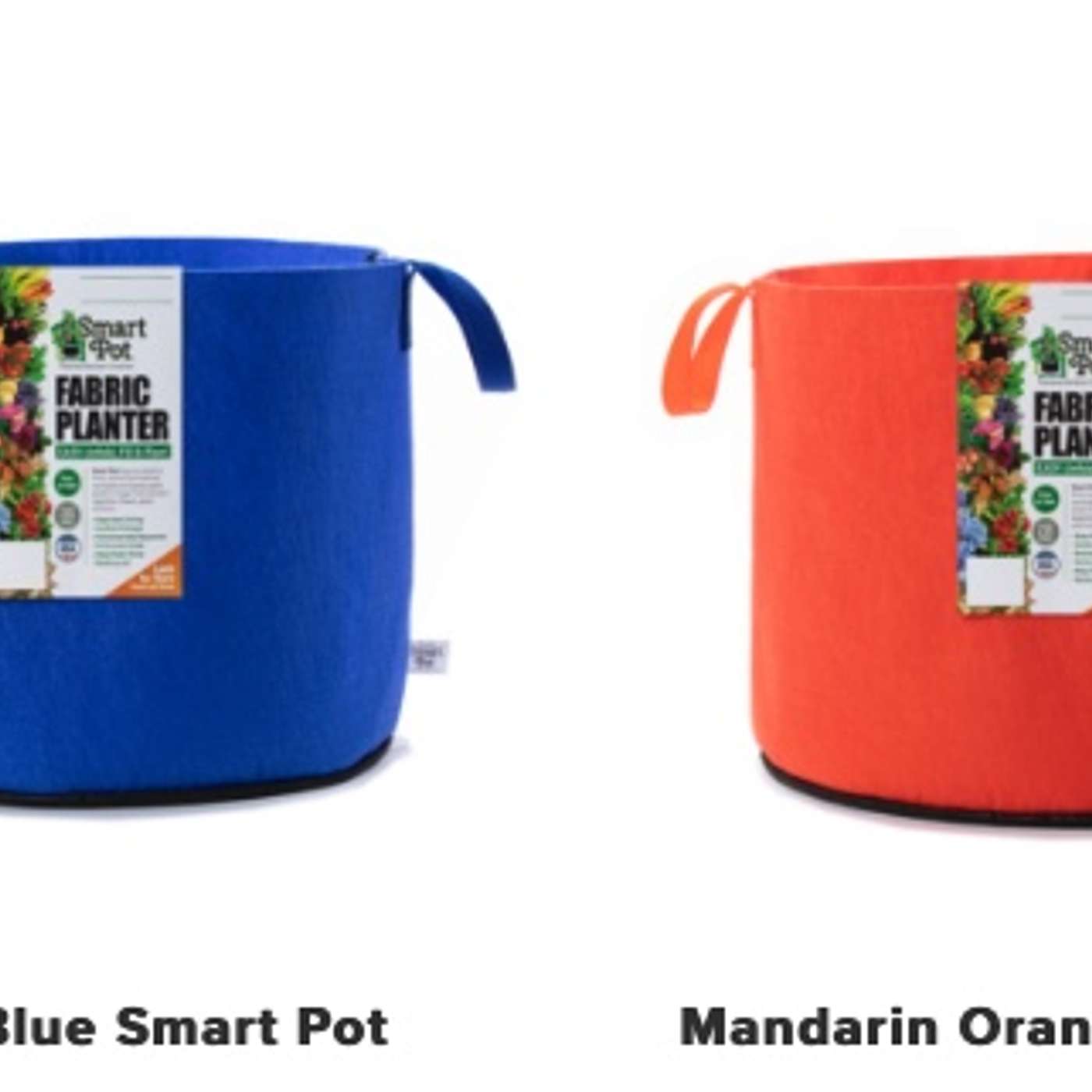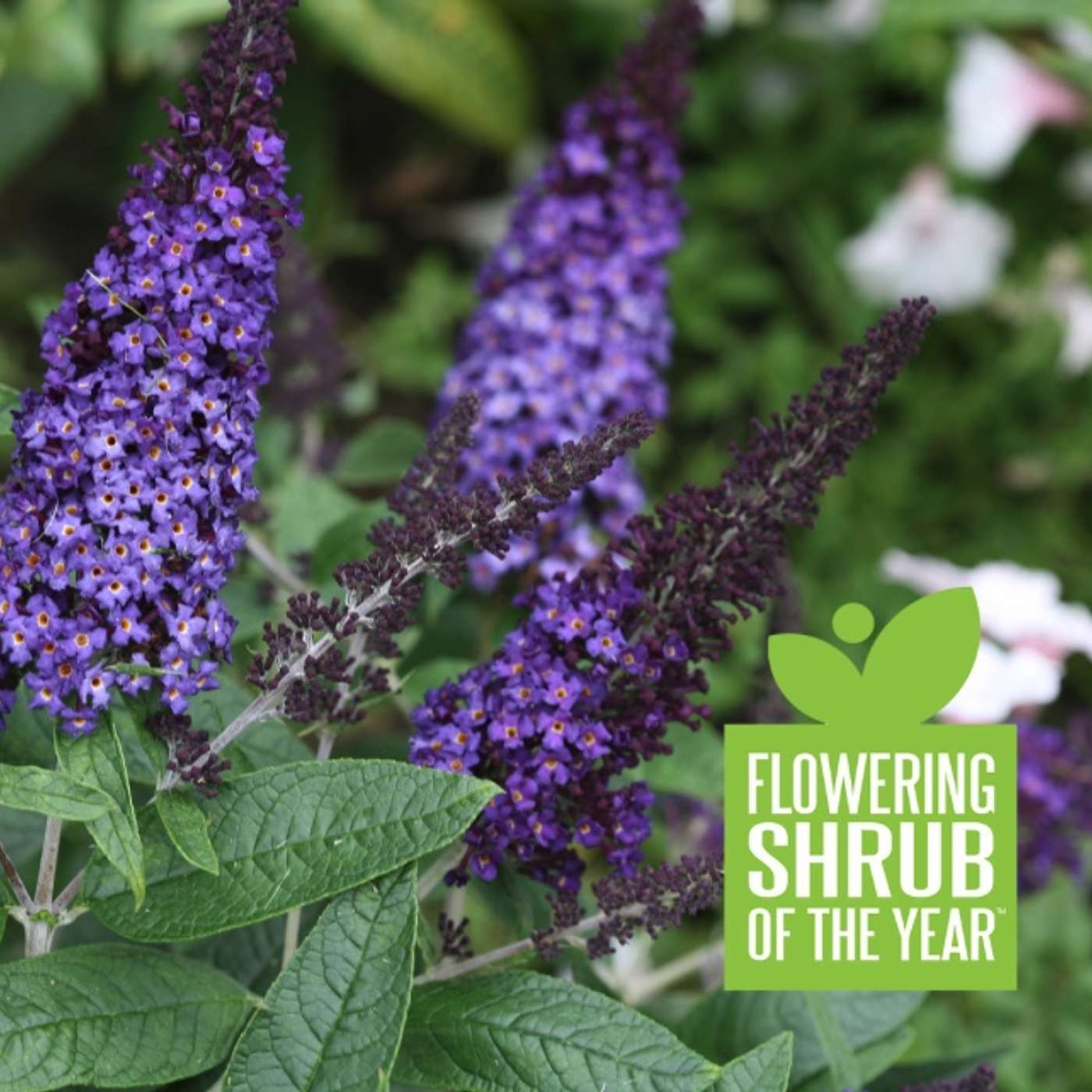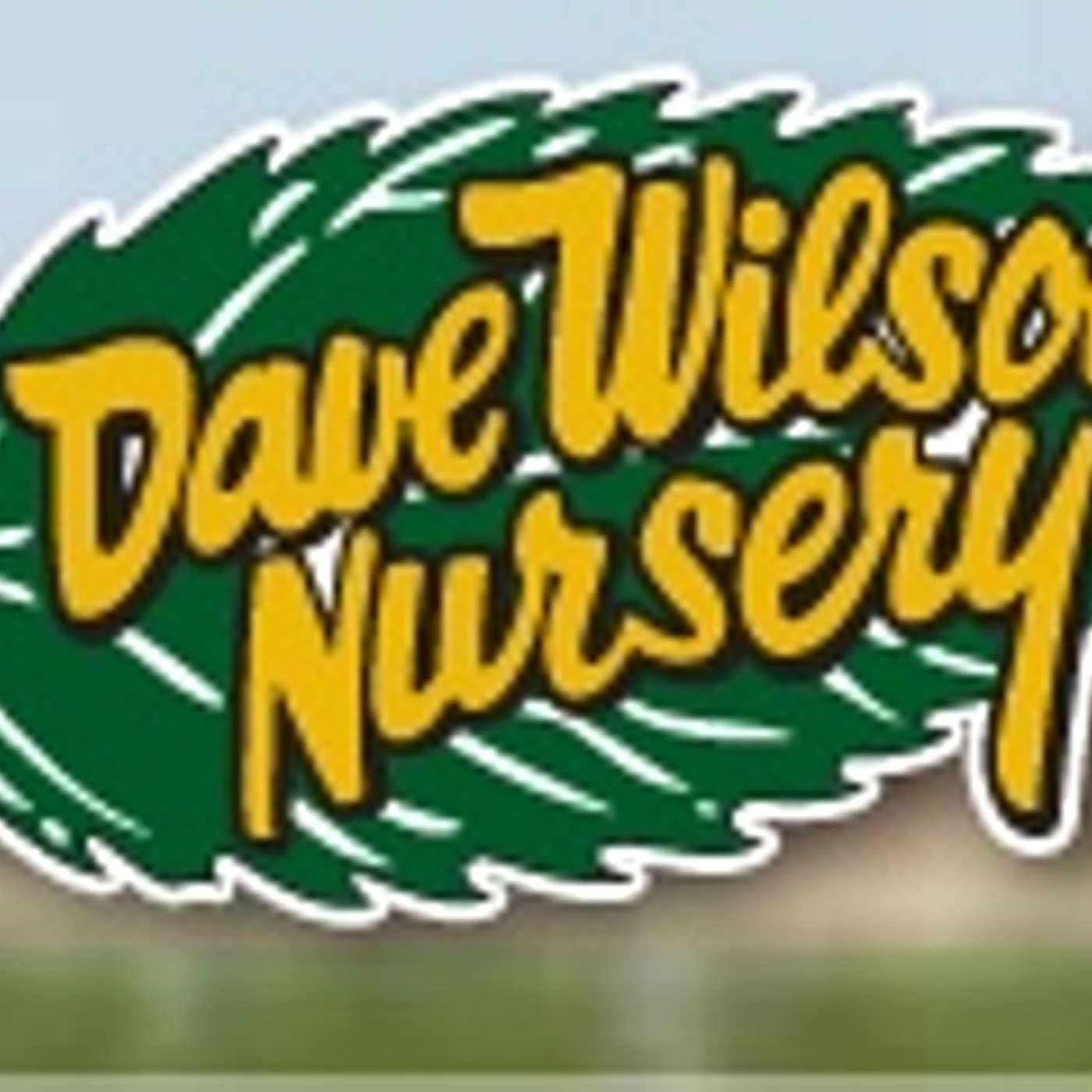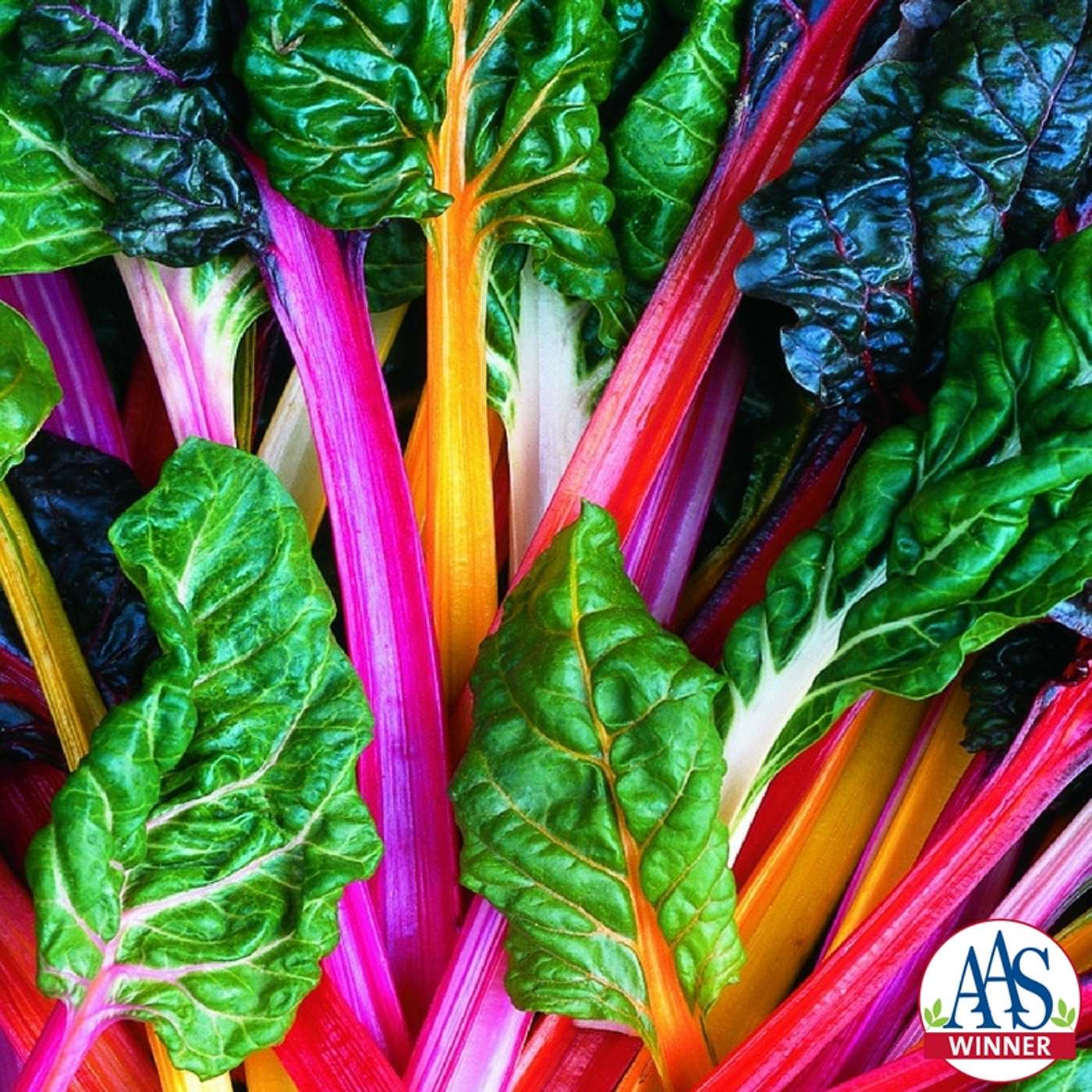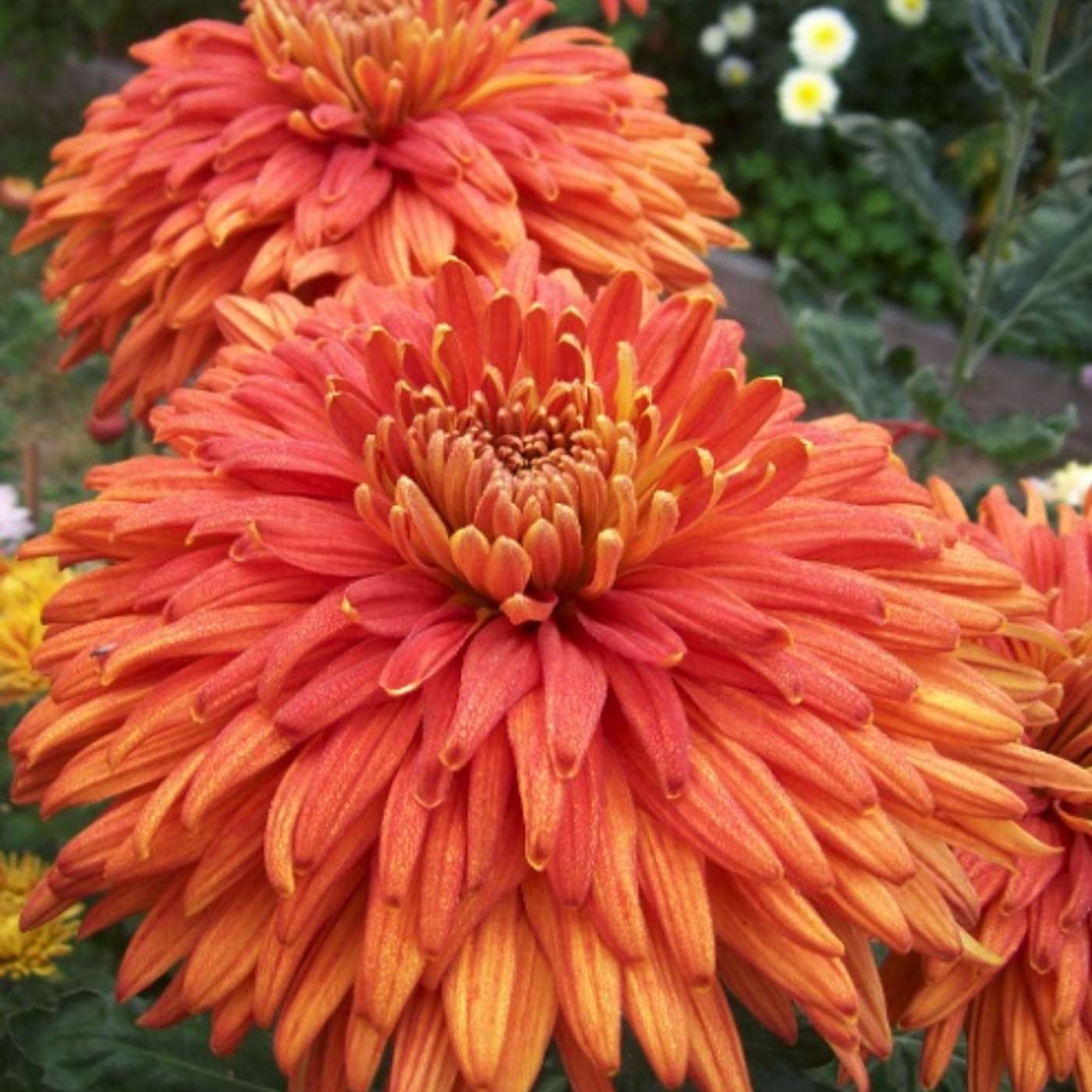
Garden Basics with Farmer Fred
Tips for beginning and experienced gardeners. New episodes arrive every Friday. Fred Hoffman has been a U.C. Certified Master Gardener since 1982 and writes a weekly garden column for the Lodi News-Sentinel in Lodi, CA. A four-decade fixture in Sacramento radio, he hosted three radio shows for Northern California gardeners and farmers: The KFBK Garden Show, Get Growing with Farmer Fred, and the KSTE Farm Hour. Episode Website: https://gardenbasics.net
Garden Basics with Farmer Fred
123 Droopy Cucumbers. Dahlias. Butterfly Bush.
Summer heat can cause many plants’ leaves to droop on a hot afternoon. Does this pose a particular problem for cucumbers? Will that stress effect the cucumber flavor? Our favorite retired college horticulture professor, Debbie Flower, has the answers to your cucumber questions.
UC Davis Arboretum Superintendent Emeritus Warren Roberts tells us all about how to grow dahlias.
And if you want a great plant to attract pollinators and beneficial insects, it’s hard to beat the butterfly bush. And the newest varieties are much more well mannered and easier to care for. We will tell you about the "Pugster Blue" Butterfly Bush.
It’s all on episode 123 of the Garden Basics with Farmer Fred podcast, brought to you today by Smart Pots and Dave Wilson Nursery.
And we will do it all in under 30 minutes. Let’s go!
Pictured:
Pugster Blue Butterfly Bush, the 2021 Flowering Shrub of the Year
Links:
Smart Pots
Dave Wilson Nursery
UC Davis Arboretum
Pugster Blue Butterfly Bush/Proven Winners
Cucumber Care UC Ag & Natural Resources
Video: Farmer Fred on Cool Season Vegetable Gardening
Harvest Day Zoom link registration for Farmer Fred Q&A, Sat. Aug. 7
More episodes and info available at Garden Basics with Farmer Fred
Garden Basics comes out every Tuesday and Friday. More info including live links, product information, transcripts, and chapters available at the home site for Garden Basics with Farmer Fred. Please subscribe, and, if you are listening on Apple, please leave a comment or rating. That helps us decide which garden topics you would like to see addressed.
Got a garden question? There are several ways to get in touch:
leave an audio question without making a phone call via Speakpipe, at https://www.speakpipe.com/gardenbasics
Call or text us the question: 916-292-8964.
E-mail: fred@farmerfred.com
or, leave a question at the Facebook, Twitter or Instagram locations below.
Be sure to tell us where you are when you leave a question, because all gardening is local.
And thank you for listening.
All About Farmer Fred:
Farmer Fred website: http://farmerfred.com
Daily Garden tips and snark on Twitter
The Farmer Fred Rant! Blog
Facebook: "Get Growing with Farmer Fred"
Instagram: farmerfredhoffman
Farmer Fred Garden Videos on YouTube
As an Amazon Associate, I earn from qualifying p
Thank you for listening, subscribing and commenting on the Garden Basics with Farmer Fred podcast and the Beyond the Garden Basics Newsletter.
GB 123 Droopy Cukes, Dahlias, Butterfly Bush 2738
27:39
SPEAKERS
Debbie Flower, Eri from Sacramento, Warren Roberts, Stacey Hirvela, Farmer Fred
Farmer Fred 00:00
Garden Basics with Farmer Fred is brought to you by Smart Pots, the original lightweight, long lasting fabric plant container. it's made in the USA. Visit SmartPots.com slash Fred for more information and a special discount, that's SmartPots.com/Fred.
Farmer Fred 00:20
Welcome to the Garden Basics with Farmer Fred podcast. If you're just a beginning gardener or you want good gardening information, you've come to the right spot.
Farmer Fred 00:32
Summer heat can cause many plants' leaves to droop on a hot afternoon. Does this pose a particular problem for cucumbers? Will that stress affect the cucumber flavor? Our favorite retired college horticultural Professor, Debbie Flower, has the answers to your cucumber questions. UC Davis Arboretum Superintendent Emeritus Warren Roberts tells us all about how to grow dahlias. And if you want a great plant to attract pollinators and beneficial insects, it's hard to beat the butterfly bush. And the newest varieties are much more well mannered and easier to care for. We'll tell you about the Pugster Blue butterfly bush. It's all on episode 123 of the Garden Basics with Farmer Fred podcast, brought to you today by Smart Pots and Dave Wilson Nursery, and we'll do it all in under 30 minutes. Let's go.
Eri from Sacramento 01:27
Hi, Farmer Fred. My name is Eri calling from Sacramento, California. I have a question about drooping leaves on a plant during the day. Specifically on my pickling cucumber that I planted in a container. I have heard mixed messages about whether this is a natural response of the plant to prevent water loss or whether it actually represents dry soil. What are your thoughts? Thank you.
Farmer Fred 01:51
Thank you for calling us, Eri. I appreciate it. Actually, she sent that question in via speakpipe.com slash gardenbasics. You can do the same, and get your question in very easily and not have to pay for the data. So try that. Speakpipe dot com slash garden basics. Debbie Flower is here.
Debbie Flower 02:11
Here I am.
Farmer Fred 02:12
How coincidental. And also coincidentally, she loves cucumbers.
Debbie Flower 02:16
I do.
Farmer Fred 02:17
And the thing that stuck out in my mind from that question was that these cucumbers are being grown in containers.
Debbie Flower 02:24
That's tough. She set herself up for some some real intensive gardening. I say it's tough, meaning you have to pay more attention to things that are grown in containers than things that are grown in the ground, especially during the summer because the pot can get very hot and can get very dry, very quickly. When you water it, it gets very wet, very saturated, very quickly. So the plant is hitting extremes and swinging back and forth and back and forth between waterings and the temperatures are swinging back and forth back and forth, day to night.
Debbie Flower 02:54
This is a subject we've tackled many times on this program, the subject of droopy leaves and all sorts of plants during hot hot days. Sacramento has had its share of hot hot days, setting records as as much of the West this summer. I think the key is, with droopy leaves in the afternoon, is probably wait till morning and see if the leaves have rebounded.
Debbie Flower 03:17
Right. It's a condition. Droopy leaves in the afternoon is a condition called temporary wilting points, and it means that the plant is wilting temporarily. And yes, big leaf plants like cucumbers and squash don't have the ability to necessarily pump a lot of water to protect themselves against the tremendous amount of heat and sun that we are getting these days, and so they wilt and that helps them protect the stomates or the stomata, which are the pores where water leaves the plant. And so by wilting down, most of those pores are on the back of the leaf. So by wilting down, that creates a almost a little house, a tunnel, over those stomata and when they do release water it stays underneath the leaf. When I grew a giant pumpkin with my students, we did a lot of research and one of the things that was suggested was to put a micro spray irrigation underneath the leafs, specifically to keep them cool and prevent that wilting. The wilting is inhibiting the growth of that plant and is inhibiting the fruit production of that plant. My experience is I get enough cucumbers without worrying about that. And so I do what you say, which is wait until the next day and see if the leaves have popped back up overnight.
Farmer Fred 04:32
Does that wilting affect the flavor of the cucumbers? Would that wilting cause more bitterness in a cucumber?
Debbie Flower 04:39
Bitterness in a cucumber is dependent on several things, one of them being the cultivar or variety that was chosen. But another is the evenness or unevenness of the watering. I believe it would have to be the greater extremes than just wilting during that afternoon. But I would encourage Eri to check the soil when that happens, and growing in a container, the media In the container can shrink up. And she may think she's watering it really well. But the water may be just going around that shrunken ball of media and roots, and not actually getting into the center of the plant. And so when the roots on the exterior have run out of water, there's no more in the root ball area to feed the plant. There are a number of ways in the field we do, maybe by digging a hole or using a soil probe, which is a hollow tube that you stick down into the soil and bring it up and on one side, it's missing the tube part. And you can see the soil in a container, I would get a nice moisture meter, and just a moisture meter, not something that does moisture, and pH and sunlight. You want something that does one thing really well, they're not horribly expensive, they're readily available. And I would use that you have to get to know it. So I would water the plant really well. And I wouldn't just add water on top, I would. If you've got it, find a container that's bigger than the pot it's in. And that may be very difficult. And submerge the cucumber pot into that larger pot and fill the larger pot up with water and let it sit for a couple hours. And then take it out and let it drain and use the moisture meter at that point. And that should tell you where the moisture meter is going to read when the soil is full of water. Then let it dry down, maybe go out when it's wilting. Stick it in then and see where that is. And you can mark those with a piece of tape or a marker on the face of the moisture meter. And then you know you're trying to keep your water conditions in between the two. If I really really wanted the sweetest cucumbers and the most cucumbers. As soon as I saw that wilting, I would drag my hose out and water that plant.
Farmer Fred 06:42
If you're in the process of lifting that pot up to put into a bigger pot, take a look at the drain holes on the bottom to make sure they aren't clogged.
Debbie Flower 06:50
They could be clogged by roots or by other debris. Yes, yeah.
Farmer Fred 06:54
And then maybe when you put that pot back on the ground, don't put it on the ground. Raise it up an inch or two.
Debbie Flower 06:59
Right. So you get some airflow underneath there and you get good drainage. Yes.
Farmer Fred 07:03
And maybe plant it?
Debbie Flower 07:05
and then once you're taking it out or taking it out of the out of that bigger pot and empty the water, get some more media cut the roots and put it in there. Yeah, transplanted into the bigger pot. Oh, that's a potential.
Farmer Fred 07:17
Yeah. All right. Well, Eri, cucumbers can be tricky, but I think Debbie supplied a lot of good information there. Thank you, Debbie. Oh, my pleasure, Fred.
Farmer Fred 07:30
We're glad to have Smart Pots on board supporting the Garden Basics podcast. Smart Pots are the original, award-winning fabric planter. They're sold worldwide. Smart Pots are proudly made 100% in the USA. I'm pretty picky about who I allow to advertise on this program. My criteria, though, is pretty simple. It has to be a product I like; a product I use; a product I would buy again. And Smart Pots clicks all those boxes. They're durable. They're reusable. Smart Pots are available at independent garden centers and select Ace and True Value stores nationwide. To find a store near you visit SmartPots.com slash Fred. It's Smart Pots, the original award winning fabric planter. go to SmartPots dot com slash Fred for more info and that special Farmer Fred discount on your next Smart Pot purchase, go to SmartPots.com slash Fred.
Farmer Fred 08:29
If you want to turn your front yard into a pollinator airport, attracting butterflies and hummingbirds, I have a suggestion for you. The Pugster Blue butterfly bush from Proven Winners. Let's talk with Stacey Hirvela from Proven Winners and Stacey, butterfly bushes are popular because of the flower size. But the old style butterfly bushes were kind of a hassle in late fall and winter because they get kind of gangly, but the Pugster Blue is so nice because it's compact, and it's easy to care for.
Stacey Hirvela 09:04
Yeah, it is very easy to care for. And you know it doesn't become so much of a liability. And so you know, butterfly bushes, for all of their fantastic qualities, long blooming, fragrant, super colorful and of course attracting butterflies and hummingbirds. They're just not at their best by the end of the season. And we really wanted to change that. So as you're developing butterfly bushes, looking to create a more compact landscape friendly or garden friendly habit that's really gonna look good. And the Pugster is one way that we did that. So it reaches for us about two feet tall and wide for you guys it might get a little bit bigger simply because it has a much longer growing season, you know, than it does in cooler climates, but it's still gonna stay very compact. But unlike other very compact butterfly bushes, its flowers are the same size as the ones that get to be 8-10 feet tall. So you have this small, easy to grow plant with these absolutely gigantic flowers on it, that will just give it so much impact in your garden or landscape.
Farmer Fred 10:06
Exactly. And another benefit for us here in California is the butterfly bush doesn't require that much water and has a very low water need to get through the summer.
Stacey Hirvela 10:16
And that is definitely true. And in fact, that's even true for me here in Michigan, I grow my garden is almost in pure sand. And I don't ever need to give so much as a drop of supplemental water to my butterfly bushes and the deer don't touch them. So I don't know if this is an issue for you, but they are definitely completely unbothered by deer and rabbit, and believe me, if they would be bothered by deer and rabbit, my yard would be a proving ground because I have an abundance of both. So yeah, they're, you know, they're easy to grow. They're easy to maintain, and they bloom for so long. And that's I think, is really one of the nicest factors about them is that you know, you don't need to fuss around with doing something when they go out of bloom because they're really going to bloom all summer. And that's the great thing about Pugster Blue is that color and I'm sure you've seen in the pictures, Fred, that, you know, they just have this beautiful true blue with a bright kind of Orange Yellow eye in the center that just gives them this eye popping effect. And you do not need to deadhead them or in other words, remove the old bloom to continue the flowering, they will actually continue to flower without you having to do that which, you know, I don't know if you've ever tried to deadhead a butterfly Bush, but I like to say it's a job for masochist. There's no thorns or anything like that. But you know, it's so finicky, because the way that butterfly bushes flower is they kind of have this fork to bloom where they have two side blooms. And the big one coming out the center in the center one is the one that fades out first. So if you want to go ahead a butterfly Bush, you have to find snips, and you have to maneuver your way in there and just snip out that center bloom. And I'll tell you it is not a fun task, I have done it more than I care to say. And the great thing about when you have a butterfly bush that doesn't need that headache to continue to bloom is that it just takes a chore away. Because who wants to spend a summer day cutting up old flowers when you could just spend a summer day you know, pulling up a lawn chair and and enjoying fresh flowers?
Farmer Fred 12:08
I guess the best time to prune it then would be in spring when the new growth emerges?
Stacey Hirvela 12:13
Yes. So you know, basically, you know, they're gonna spend fall in winter kind of semi dormant, maybe some leaves clinging to the ends of the branches and some flowers. And then when spring comes, what's going to happen is that new growth is going to emerge on the stem. And that's another thing I love about butterfly bushes is if you are not a confident gardener, if you're thinking, "I'm afraid to prune things, I might hurt the plant". This butterfly bush tells you exactly where it needs to be pruned. If you wait until that new growth starts to appear, and then you just look for where those nice fresh green buds are coming out. And then you just want to go ahead and cut a branch off just above where that is emerging. And then that is the growth that's going to take over for a year. Now. This should be ultimately a very significant prune. You know, this isn't gonna be a light trim where you're just taking off a few inches on a butterfly bush, you know, you want you want to take off quite a lot because if you do not, they become what I call an as reference, a second story plant. You know, they're blooming way up there even for a contact variety like Pugster without pruning them hard like that. The branches are gonna get kind of more spread out they'll still be smaller and they'll still have big flowers but you want to maintain that nice, dense compact size so don't be afraid. Wait for that new growth. The plant says hey, prune me right here. Whack it off and you will be glad you did.
Farmer Fred 13:36
And for those who are unfamiliar with the flower shape of the butterfly bush I would describe it as an upside down, upright purple ice cream cone.
Stacey Hirvela 13:47
I like that description. Yeah, it's spiky but not very pointed. It is pointy but it's not like a you know big upright. They kind of cascade down slightly you can't help but notice them though they are very very showy. And there's always a lot of them which also means that there's always a lot of butterflies and hummingbirds and pollinators visiting them.
Farmer Fred 14:10
Exactly. And one thing we didn't mention, and we should, this butterfly bush, the Pugster Blue butterfly bush, is a show for the nose as well.
Stacey Hirvela 14:18
Oh yes. Yeah they have such a fantastic smell. It pretty much to me, you know, scent is always so subjective from person to person. But to me they smell like honey. And because they are going to be growing in full sun, they love a good hot sunny spot. All the better to release that fragrance in the air and it is very very sweet. Like I said, honey. So that's one of the reasons that attracts pollinators and makes such a great plant. And I know you like to talk about growing shrubs in containers. The Pugster Blue butterfly bushes are fantastic shrubs for containers and all the better to plant a bunch of them up and put them on your patio, balcony deck, whatever, and be able to enjoy that fragrance and That color and all the butterflies right up close.
Farmer Fred 15:03
Yeah, it only gets two to three feet tall and wide. So a 20 inch pot or or bigger would be perfect for it.
Stacey Hirvela 15:09
Yeah. Or you know some of those more rectangular containers that you'll see a lot for, you know, kind of creating almost like a hedge, it would be perfect in something like that as
Farmer Fred 15:18
It's easy care, doesn't require much water. It loves a hot dry spot in your garden. It's the Pugster Blue butterfly bush. And Stacey, if people want more information, I bet there's a website.
Stacey Hirvela 15:29
There sure is. All you have to do is go to proven winners.com, type in Pugsterr. So that's P-U-G, like the dog, with an S-T-R at the end, put it in the search box, and you'll see all five varieties.
Farmer Fred 15:43
ProvenWinners.com is the website. Stacy Hirvela, thanks for spending a few minutes with us, telling us more about the Pugster Blue butterfly bush.
Stacey Hirvela 15:50
Thanks so much for having me. It's always a pleasure.
Farmer Fred 15:57
You have a small yard and you think you don't have the room for fruit trees. Well, maybe you better think again. Because Dave Wilson Nursery wants to show you how to grow great tasting fruits, peaches, apples, pluots and a lot more in small areas. You could even grow them in containers on patios, as well. It's called backyard orchard culture. And you can get step by step information via the Fruit Tube videos at DaveWilson.com. And that's where you're going to find the closest nursery to you that carries Dave Wilson's quality fruit trees. So start the backyard orchard of your dreams at DaveWilson.com.
Farmer Fred 16:36
The Sacramento County Master Gardeners have a new video posted at their youtube channel about choosing and planting many of the cool season vegetables you might be considering. The downside is, you’ll have to look at my face. But there is a lot of good cool season veggie info to make up for that. Again, that video can be found at the Sacramento County Master Gardener Youtube page. We will have a link to it in today’s show notes. Plus, coming up on Saturday August 7, the Master Gardeners have a full morning of garden presentations on their Harvest Day Zoom channel. I’ll be one of the presenters, live from the abutilon jungle here at Barking Dog studios in suburban purgatory, answering your garden questions. That’s Saturday, August 7. You need to register for this Zoom garden class, find a link in today’s show notes, or check out the Harvest Day page at the Sacramento County Master Gardener website, sacmg.ucanr.edu/Harvest_Day/. Like I said, the link is in the show notes.
Farmer Fred 17:44
Every week we like to talk with Warren Roberts, Superintendent Emeritus of the UC Davis Arboretum and Public Garden. He always has a great plant for us, a plant that can be used in much of the United States and it's probably a plant that just might be putting on a show right now where you live. Warren, what do you have for us today? Here we are in mid summer a lot of blooming plants in summer. But as far as wide adaptations, I think today's is very widely adapted.
Warren Roberts 18:12
Well, I chose for today, the Dahlia. I mean I was thinking sunflowers, so many of the daisy relatives, but I think the dahlia is worth considering. I think there are 57,000 registered cultivars, so it is been cultivated for a long time. It was even grown before the conquest of Mexico for food, the storage tubers, I think their tubers, the storage roots, have produced inulin, which is a starch which is edible. It's the same one that you get when you cultivate the Jerusalem artichoke, which is a sunflower. So dahlias were not known until the discovery of Mexico by Europeans. And two species in particular, are a red flowered one called Dahlia coccinea. And it also comes in yellow and orange. And then a purple one called Dahlia pinnata. And those two are wild in the mountains of Mexico. And there are actually about 42 species which ranged from Mexico down to Colombia. But those two are the main ancestors of the cultivated Dahlia. So when they were brought back to Europe, this would have been in the 1500s more likely. People said wow, this is a beautiful thing and people started hybridizing and choosing and, and so on, until we have this amazing amount of beautiful flowers. It is a tropical, it's native to tropical mountains, but it's in Europe and in places where you get snow. At the end of the season, you divide the clumps, making sure that you have a piece of stem on each one of the large food storage roots. If you don't, then you're out of luck. So you have to have a piece of the stem connected to it, it doesn't have to be very big. And then they're stored. My uncle in Ontario, Oregon, had a large collection of dahlias. And every year he picked them up and put them in the root cellar until the danger of frost was passed and he would plant them out again. But they're worthwhile. The flowers are gorgeous. In fact, it's, let's see, Dahlia, D-A-H-L-I-A, that the spelling, and it is actually the national flower of Mexico. That's a good choice, since the species that make up the ancestry are both from Mexico. In the mid 60s, I was in Mexico City and the director of the parks and trees for the federal district in Mexico, had been at Davis, a gradof the University of California, Davis. And he toured me around and there were huge plantings of dahlias, in the new Chapultepec Park, which is the big hilly area. Patches of dahlias, each one a single color. And each one was about the size of the living room and dining room. It just impressed me so much, the pride of the country in its own national flower. There are also dahlias, which are almost tree like, they look almost like bamboos, they get both 15 feet tall or more with huge clusters of flowers. Those are pretty much limited to areas that have mild winters. But I remember dad brought home, it looked like a length of bamboo, stuck it in the ground, and we had dahlias! Yes, so that's Dahlia imperialis. It is kind of an appropriate name. Of the 42 species, about 14 of the wild species are actually available in the trade, particularly in Europe, but also in this country, too. In our climate, which is hot and dry in the summer, they prefer a little bit of shade in the afternoon, but they're easy to grow. And the cultivars include little ones too, so you can have it as a bedding plant. And I remember seeing a beautiful planting of those at the Monserrat sanctuary in Spain and at the Lunia. But I've seen it here as well. So they're available.
Farmer Fred 22:36
How the heck do you keep a six foot Dahlia upright?
Warren Roberts 22:39
Well, the staking is often needed for dahlias, the one that's the tree Dahlia though it has an extensive root systems. It stays upright, but the taller dahlias often need to be staked. The flowers can be so huge that that they can almost pull the plant over. But there's not much fragrance to the Dahlia, at least not that I know of. But with a stunning beauty of eye candy from the garden. It really is. They really are worth growing.
Farmer Fred 23:12
I think you may have answered a question that we had on this show a few weeks ago from Mary in Virginia, and she was having some dahlia issues. A storm came in and broke her Dahlia, leaving basically just a small stem. And she was wondering, well, is it going to live or not?
Warren Roberts 23:32
Sure it'll live. It's too bad that the top was lost but as long as there's a bit of the root with a bit of the stem. I mean, that's all you need, really. So yeah, don't dig it up and throw it away. Just watch it and take care of it.
Farmer Fred 23:48
So all you need is patience.
Warren Roberts 23:49
That's all we need. Where do you get patience these days? I don't know anybody that sells it.
Farmer Fred 23:56
There's a hospital down the street that has them.
Warren Roberts 24:00
Patience is good and gosh, you know, this is one of those flowers where you have national societies, national dahlia society, and great enthusiasm at their flower shows. I think it'd be worthwhile to check the search engine on your iPhone and just put in "Dahlia" D-A-H-L-I-A, and look at the images. It's almost endless.
Farmer Fred 24:09
In what climates do you have to dig them out for the winter?
Warren Roberts 24:32
Any place where the ground is going to freeze.
Farmer Fred 24:35
What's the process for doing that?
Warren Roberts 24:38
Well, usually there has been a frost that kills the top. So at that time, you dig down and they're usually, I don't know, depends usually more than three, usually five or six of these thickened... they look almost like sweet potatoes. So you dig them up and you cut them carefully so that they get a little piece of the stem is connected with the Food Storage organs themselves don't have buds and they're not like a potato. So they have to have a bit of stem attached. And then you can put them in the root cellar. Most people in those climates know what that's about. It does, it's worthwhile. And then in the springtime when the danger of frost has passed, you plant them out, water them, fertilize them, and away you go.
Farmer Fred 25:24
All right, do you have to dust them with sulfur to prevent rot or anything like that?
Warren Roberts 25:28
Well, I think a fungicide is a good idea. I myself don't. I wish my uncle were still living, I would call him up and ask. But usually, in areas where dahlias are treated that way, there are people that know about that. The nurseries, the local nurseries in places with those climates, would be able to help.
Farmer Fred 25:48
Yeah, I would imagine you would be storing it in your root cellar in something like sand or sawdust or vermiclite.
Warren Roberts 25:56
Something to keep them from rotting. You don't want them in a wet situation.
Farmer Fred 26:02
They come in a wide variety of sizes. The flower shapes are amazing. If you ever get a chance to go to a Dahlia show, check your garden clubs in the area where you live and if there's a Dahlia society, a Dahlia club, be sure to go to one of their shows and sales, and check them out. The amazing variety of flowering dahlias that exist.
Warren Roberts 26:26
That's right. There's just so much so much to them. So don't waste time. Don't dilly dahlia around.
Farmer Fred 26:32
Thank you, Dahlia. Yes, it's the Dahlia, widely available. A great summer bloomer. Warren Roberts is the superintendent emeritus of the UC Davis Arboretum and Public Garden. The Arboretum is open seven days a week, 24 hours a day, but basically do it during daylight, so you can see where you're going. And next time you're in Northern California, Visit Davis, visit the Arboretum. It's a beautiful, beautiful place. For more information about it, You can visit their website, arboretum.uc davis.edu . Warren Roberts, the plant of the week, the Dahlia. Thank you so much.
Warren Roberts 27:09
Thank you too, Fred.
Farmer Fred 27:15
Garden Basics comes out every Tuesday and Friday. It's brought to you by Smart Pots. Garden Basics is available wherever podcasts are handed out. And that includes Apple, Iheart, Stitcher, Spotify, Overcast, Google, Podcast Addict, Cast Box, and Pocket Casts. Thank you for listening, subscribing and leaving comments. We appreciate it.
